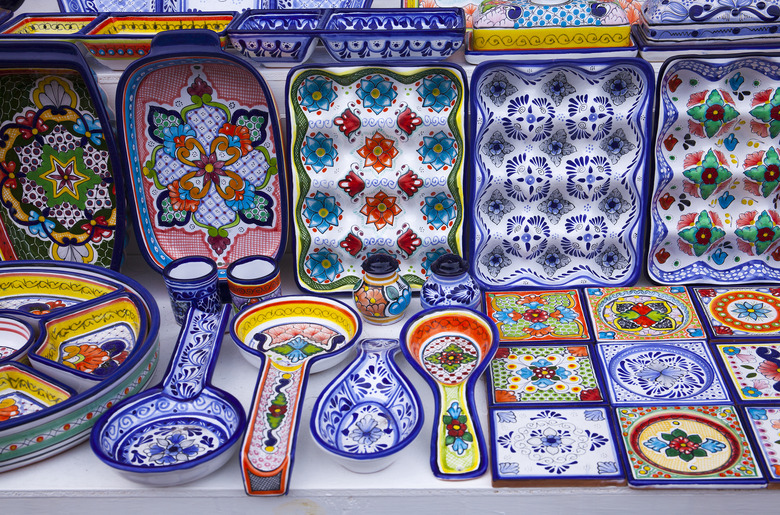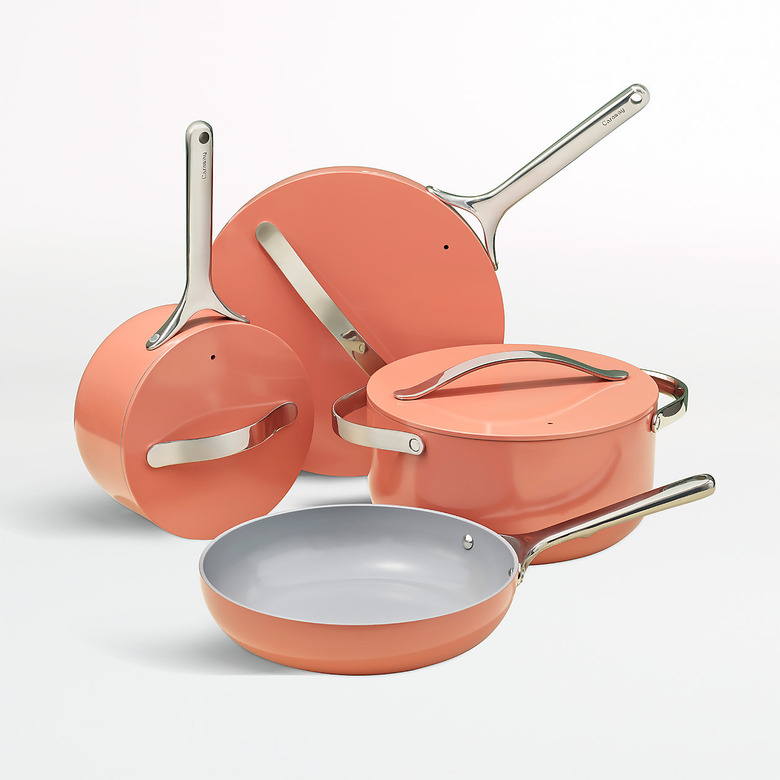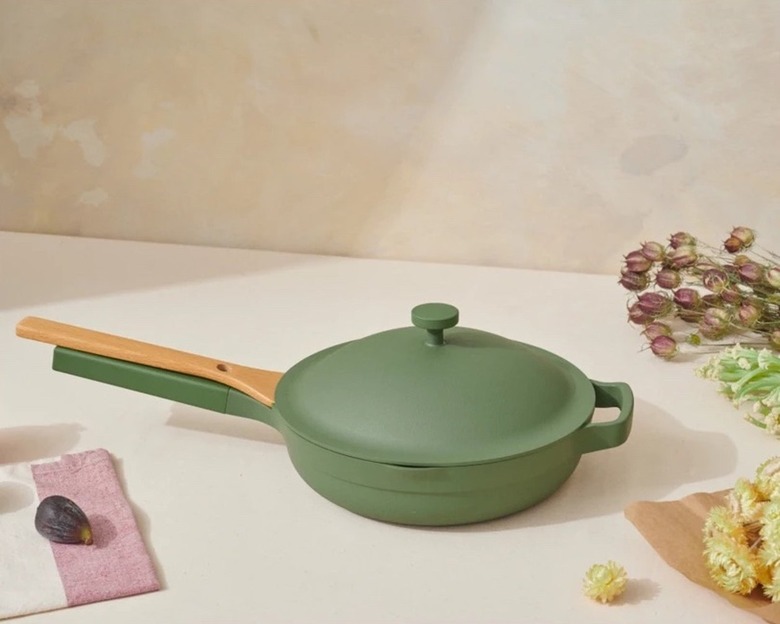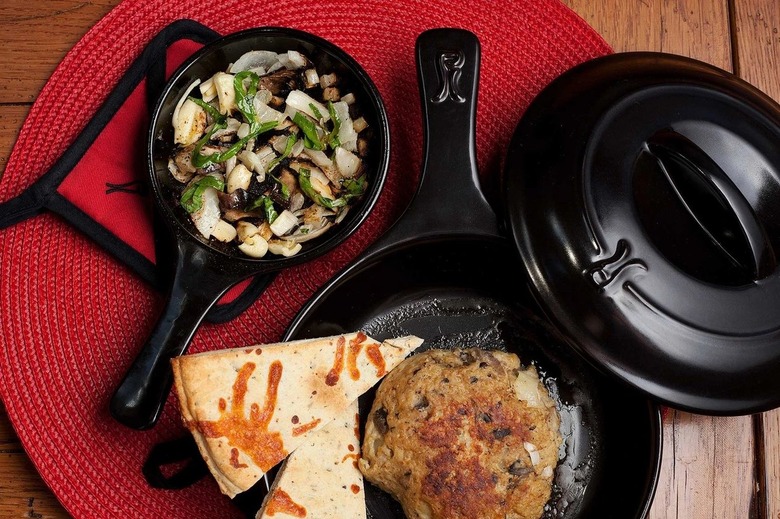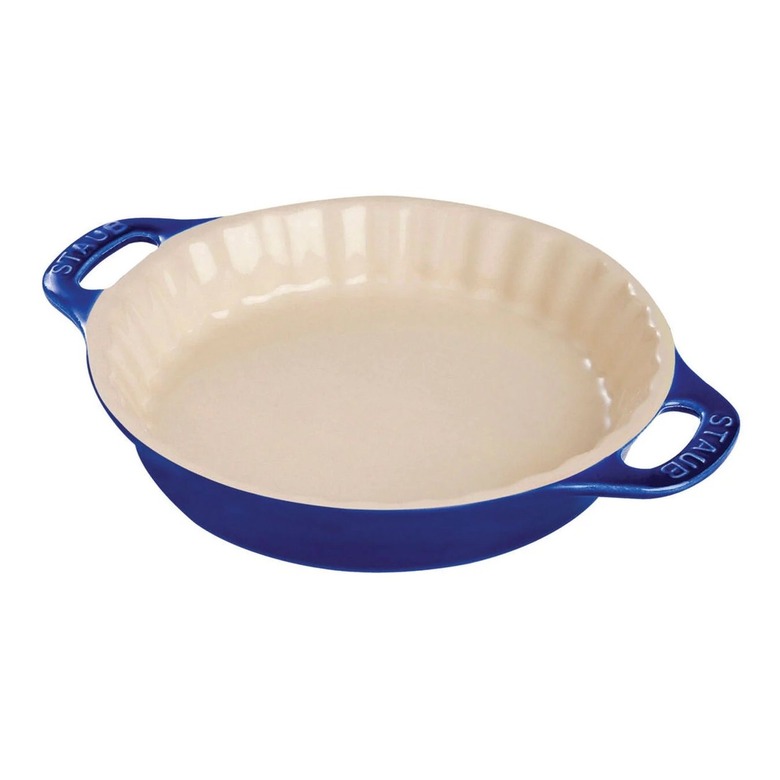The Dangers Of Ceramic Cookware And How To Use It Properly
Is ceramic cookware safe? Yes... and no. Unfortunately, while most ceramic is totally safe to cook with, the glazes and non-stick coatings used on ceramic cookware can contain toxic ingredients. This guide can help you determine whether or not your ceramic pots, pans, skillets, and dutch ovens are safe to use.
Ceramics as Cookware
Ceramics as Cookware
"Cookware" is typically anything food is cooked in, which could mean actual ceramic-based baking dishes, such as casseroles, trays, and pots — lidded or otherwise. But there is also "ceramic-coated" cookware, which comes in the form of pots, pans, and skillets.
As far as ceramic cookware goes, it's essentially made of clay hardened by fire, and people have been cooking with it for hundreds, if not thousands, of years. It can be one of the safest materials to eat from, but when left untreated, ceramic material becomes stained or discolored, which is usually why it's glazed. That glaze is often at issue and can contain cadmium or lead, among other things. And sometimes, the clay sourced for the ceramics can be problematic too.
Ceramic Cookware Dangers
Ceramic Cookware Dangers
When you're cooking, depending on your oven or stove, your cookware can reach temperatures of over 700 degrees Fahrenheit. For some cookware, like the nonstick variety, these high temperatures can cause chemicals, like cadmium and lead, to leach into foods. The use of these chemicals has been phased out in the United States, but they may still be used in some other places or found in older cookware that's often available at vintage shops, flea markets, and yard sales.
Cookware gets banged around, subjected to high heat, stirred, shaken, and scraped. As that happens, its surface — whether it's a nonstick finish, enameled cast iron, or a glazed ceramic tagine from Morocco — can become scratched or chipped. For metal, this can mean minuscule metal particles end up in your food. With that chipped ceramic pan, for instance, those scratches or chips mean you may get glazing or even ceramic flakes in your food, which can range from not dangerous to highly toxic, depending on where it's from and the volume of leaching.
Whether it's the glazing that's the problem or the components of the ceramics, the big risk with suspect cookware is that it will leach toxicity into food. And some foods, like the beloved tomato or anything citrus, have increased acidity that escalates this reaction.
If you look at the numbers, it may seem as if cooking a meal with these dishes isn't particularly dangerous, but the bigger concern is their cumulative effect — that is, using these dishes meal after meal, day after day. Even just one meal a day cooked on these dishes would mean 365 exposures annually, and those regular exposures can add up.
Point of Origin: Safety Standards
Point of Origin: Safety Standards
Where's it from? If a product is from, say, Japan, it's likely safe because they have stringent laws and safety standards. But other spots may have less regulation and oversight. Many regions in Europe and Asia have artisans that still use lead and other toxic chemicals in their processes.
So why are they allowed to sell dishes made with unsafe materials? Because they sell them as décor items rather than food vessels, which means that beautiful pot isn't meant to be cooked with, just ogled. Perhaps a merchant didn't use proper "not for food" labeling. Or perhaps over time, a "not for cooking" label wore off. Either way, it's one of the risks you take if you buy used ceramics.
If you're unsure of the origin or intended use for ceramic dishes, don't use them for hot food. Hang them on the wall or use them as fruit or nut bowls or for those pinecones you love to display in the autumn. But that's it.
Using Ceramics Safely
Using Ceramics Safely
Following the manufacturer's care suggestions is always recommended, but what if the item isn't marked? In general, avoid using ceramic cookware directly on stove elements or flames and don't use metal spoons or spatulas. For cleaning, use non-scratch sponges or cloths, so you're less likely to damage the glazing.
If your ceramic cookware shows any cracks or chips, it's time to stop using it. Beyond the risk of consuming flakes or chips, bacteria can also reside in the cracks.
Unfortunately, ceramic items don't recycle, but chipped or cracked ceramic dishes look fabulous in a garden or hosting a little group of succulents on your porch. You can also strategically break ceramics and use the shards in creating mosaic patterns on everything from tabletops to mirror frames.
Ceramic-Coated Cookware
Ceramic-Coated Cookware
Ceramic-coated cookware is a fairly recent trend in pots and pans. These are metal pans with a nonstick ceramic coating. The coatings are generally considered safe and are made using silicon and other inorganic compounds that do not contain carbon. Depending on the brand, they can be oven-safe from 350 to 500 degrees Fahrenheit — which is about the same as Teflon.
One important consideration to keep in mind is that ceramic-coated cookware should never be used under a broiler or in back-to-back extreme temperatures. So don't take a pan out of the fridge or freezer and put it on a hot burner or in a hot oven, because doing so may crack the coating.
Our Picks
Pure Ceramic Cookware
Pure Ceramic Cookware
Finally, there are some companies that make skillets and Dutch ovens out of 100% pure ceramics, with no metals. These products are not only safe, but they're also high-quality cookware when made well.
For example, Xtrema is one such brand that's FDA-approved and backed by a decade-long warranty, not to mention landing high ratings in ceramic cookware reviews. Another is Emile Henry, a popular French brand known for everything from their celebrated tagines to their French onion soup pots.
The important takeaway is that ceramic bakeware and cookware is a huge category in which the best-made, highest-quality products tend to be among the safest types of cookware you're likely to encounter.
